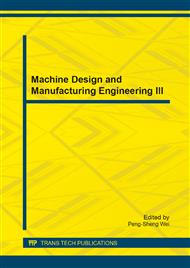p.161
p.166
p.171
p.176
p.181
p.185
p.193
p.197
p.205
Mixing Homogeneity and Rheological Characterization for Optimal Binder Formulation for Metal Injection Moulding
Abstract:
Mixing homogeneity and the feedstock rheological characteristic for optimal binder formulation in metal injection moulding is evaluated between Polypropylene (PP) and Sewage fat (SF) or Fat Oil Grease (FOG). Difference powder loading of SS316L also being used here to determine the possibility of the best binder formulation selected could be optimised for optimal powder loading base on rheological characteristic analysis. Two binder formulations of PP to SF being selected here are 60/40 and 70/30 accordingly with the powder loading of 60% and 55% for each binder formulation. The analysis will be base on viscosity, shear rate, temperature, activation energy, flow behaviour index and moldability index. It is found that rheological result shows all the two binder formulations with both powder loading exhibit pseudoplastic behaviour or shear thinning where the viscosity decrease with increasing shear rate. Feedstock viscosity also decrease with increasing temperature indication of suitability for moulding. Results from all the analysis conducted shows that the volumetric powder loading of 60% with binder volumetric of 60% for PP and 40% for SF contributes significant stability and suitability for optimum powder loading.
Info:
Periodical:
Pages:
181-184
Citation:
Online since:
July 2014
Authors:
Price:
Сopyright:
© 2014 Trans Tech Publications Ltd. All Rights Reserved
Share:
Citation:


